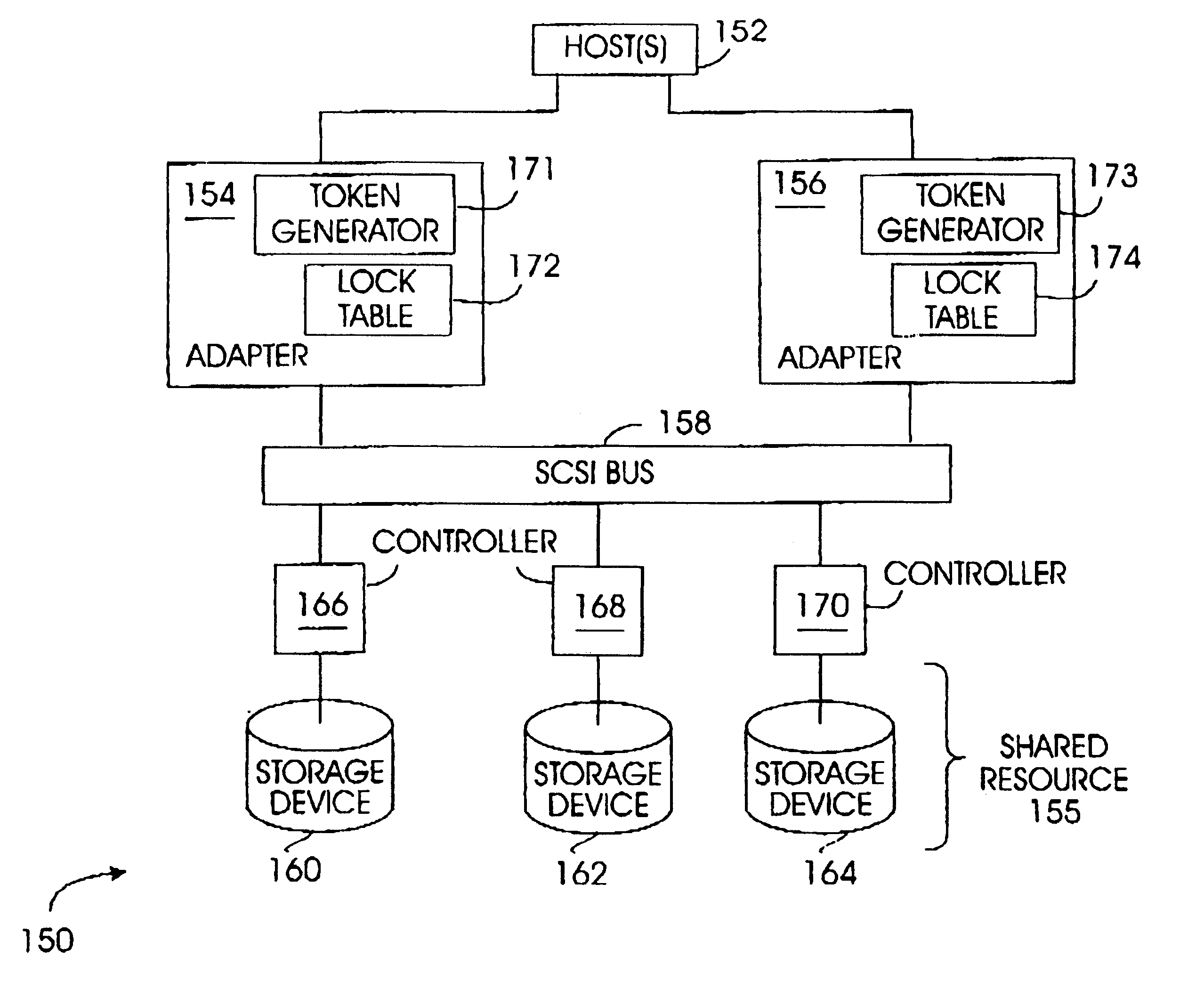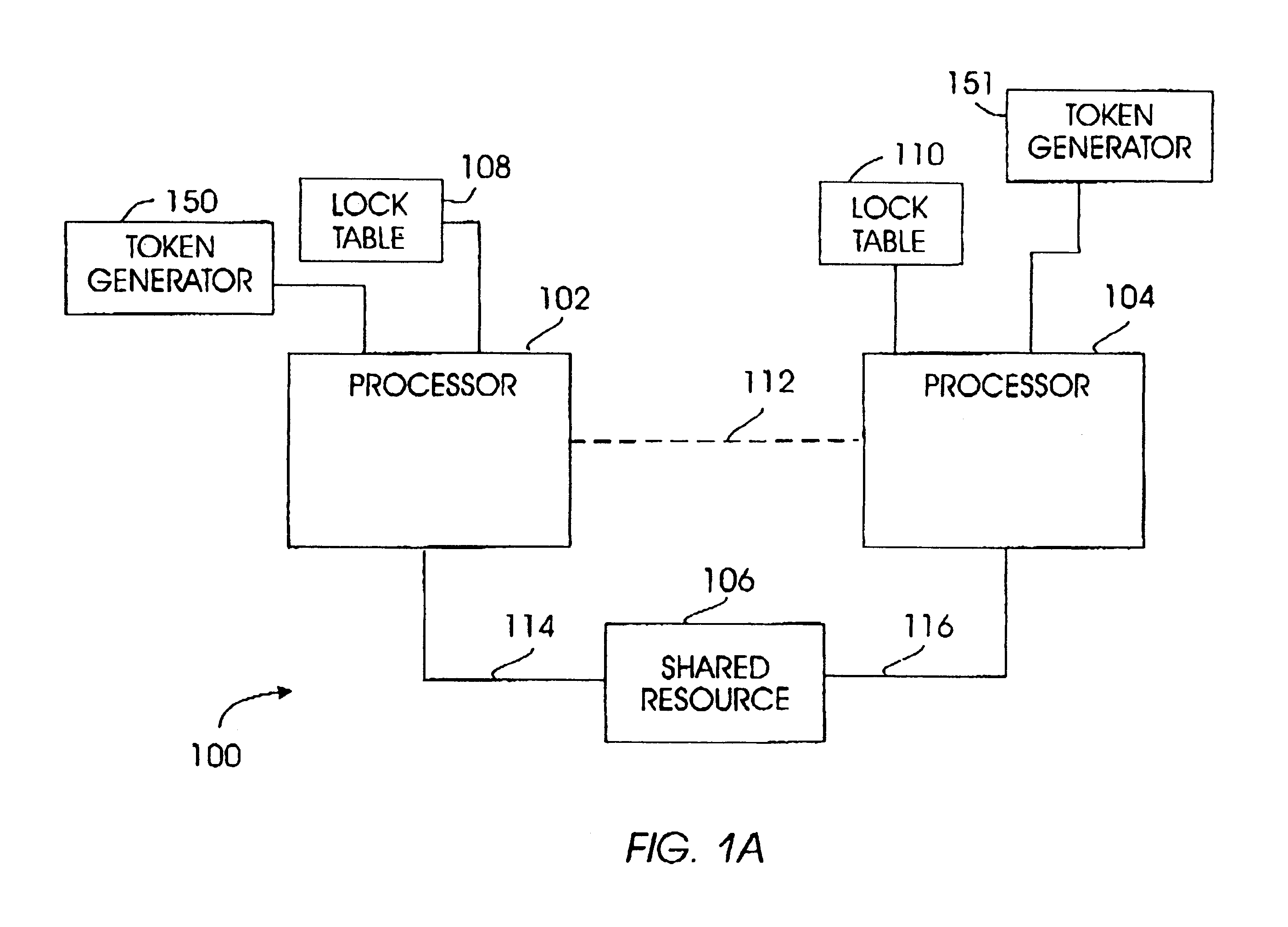Method for managing concurrent processes using dual locking
a technology of concurrent processes and locking, applied in the field of computer systems with multiple processing units, can solve the problems of wasting the full throughput of the shared resource, requiring further complicated, and challenging sharing such a resour
- Summary
- Abstract
- Description
- Claims
- Application Information
AI Technical Summary
Benefits of technology
Problems solved by technology
Method used
Image
Examples
Embodiment Construction
Storage System
FIG. 1B depicts a more particular example of the multiple processor system of the invention, in the form of a digital data storage system 150, in which the shared resource comprises data storage. The system 150 includes two storage adapters 154, 156 and a shared resource 155. The adapters 154, 156 are coupled to one or more hosts 152. The adapters 154, 156 may be coupled to the same host(s), completely different hosts, or a mix of common and distinct hosts. In one example, the adapters 154, 156 may comprise printed circuit boards physically and electrically mounted within the host(s) 152. As an even more specific example, the adapters 154, 156 may comprise IBM model ServeRAID II adapters.
In this example, each adapter 154, 156 houses a respective lock table 172, 174, stored in nonvolatile storage aboard the adapter. The nonvolatile storage may comprise, for example, random access memory ("RAM") with backup battery power, optical storage, hard drive storage, etc. The loc...
PUM
 Login to View More
Login to View More Abstract
Description
Claims
Application Information
 Login to View More
Login to View More - R&D
- Intellectual Property
- Life Sciences
- Materials
- Tech Scout
- Unparalleled Data Quality
- Higher Quality Content
- 60% Fewer Hallucinations
Browse by: Latest US Patents, China's latest patents, Technical Efficacy Thesaurus, Application Domain, Technology Topic, Popular Technical Reports.
© 2025 PatSnap. All rights reserved.Legal|Privacy policy|Modern Slavery Act Transparency Statement|Sitemap|About US| Contact US: help@patsnap.com



